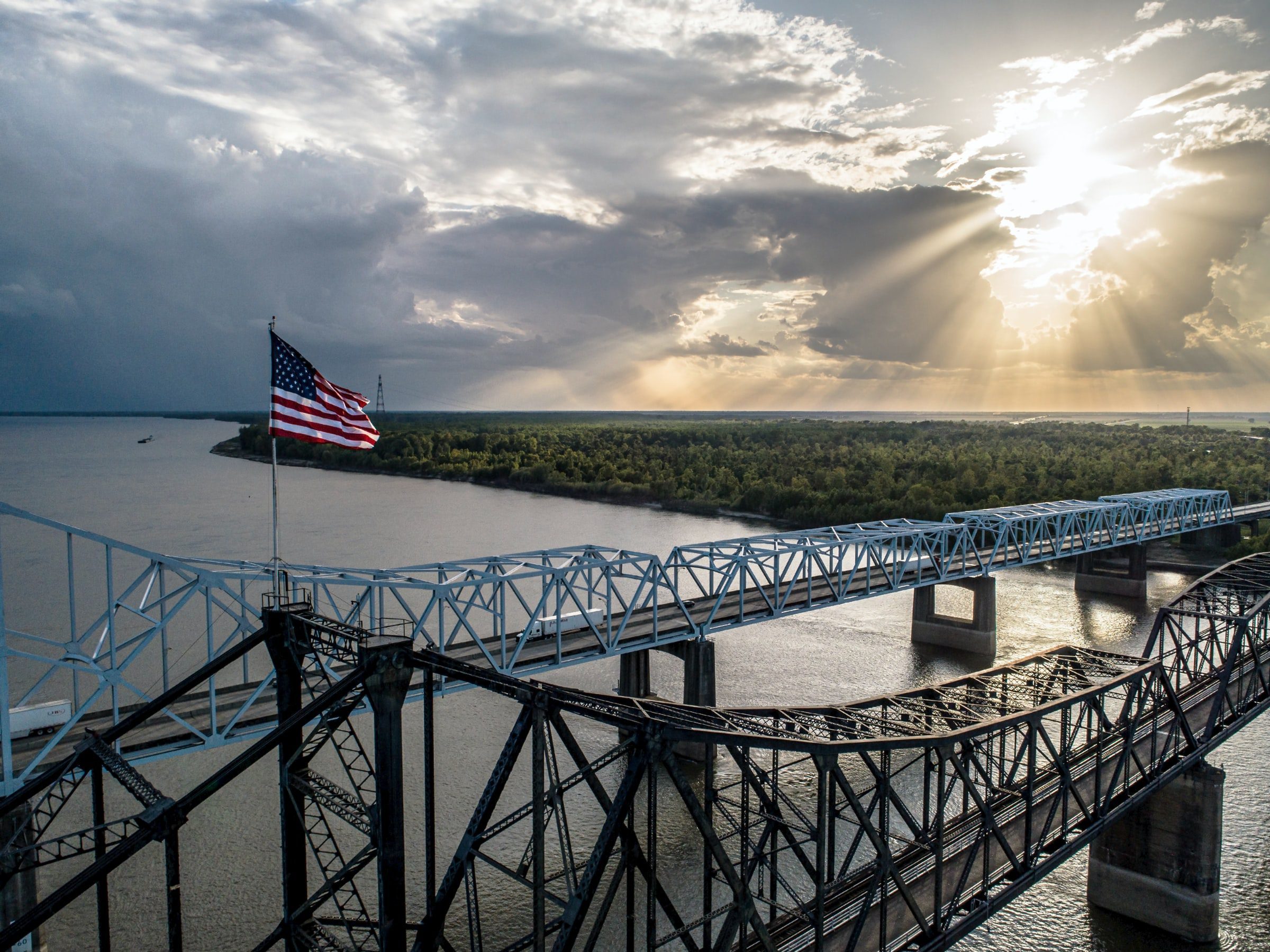Few states in the Union are as shrouded in myth and mystery as Mississippi. Inside its borders, mystic legends are born and raised. From proto-bluesman Robert Johnson’s famous Faustian deal with the devil at the crossroads – as the story goes – gave him his other-worldly musical abilities, as well as the ghosts of freedom riders and the fertile delta soil battlefields of Vicksburg and Shiloh.
Mississippi’s history is a mix of solemn, wild, sweaty, exaggerated fiction. Somewhere between these two divergent worlds, the true story of this old south stalwart is found.
With a rich and diverse history, the Magnolia State is home to many attractions for nature lovers, military buffs, and agricultural history enthusiasts alike. Below are some can’t miss spots when visiting the 20th state in the Union.
Natchez National Historic Park
This site near Natchez, Mississippi is a multifaceted historical and cultural crossroads as one will find in the deep South. Owing to its namesake to the Natchez native tribes that dwelled and thrived there long ago, this national park stands now as a commemoration and preservation of the many ways of life that, at different times, inhabited this region. The park comprises five National Parks Services’ owned sites (Forks of the Road, Fort Rosalie, Melrose, the William Johnson House, the Natchez Visitor Center, and a larger area known as the preservation district) and each location allows visitors to learn more about the area’s social, political, and economic history, in the pre-and-post Civil War years. Also highlighted is a special focus on the region’s commercial and agricultural history, especially concerning the Mississippi River and the cotton and slave trades before and during the War Between The States.
Shiloh National Military Park
Mississippi is renowned for its many battlefield sites, and none is more heartbreaking and consequential in the western theater of the Civil War than Shiloh, preserved now as a national military park that straddles the Tennessee line to the north. At the time of this epic battle, nearly 110,000 men met in conflict, and the resulting 23,746 casualties left in its wake at the time totaled more than all other American wars combined. This site not only preserves the lives, memories, and stories of the fierce combatants of those bloody days nearly from over 150 years ago but within its ground, it holds the remains of nearly 4,000 soldiers slain in its national cemetery. For those interested in the story of the old south, the struggles of the Civil War, and the soldiers whose lives were forever changed by those momentous times, Shiloh National Military Park should rank at the top of every must-visit list.
Medgar And Merlie Ever Home National Monument
A different yet inextricably linked, type of commemorative site can be found in the capital city of Jackson, Mississippi. This national monument represents a continuation of the battle being fought a hundred years in previous sights like Shiloh and Vicksburg. The murder of Medgar Evers, the first field NAACP secretary in Mississippi, in his carport in Jackson in 1963 marked the first assassination of a nationally known civil rights leader and is seen as one of the catalysts to the passage of the Civil Rights Act of 1964. Along with his partner and wife Merlie Evers, Medgar led the charge as an early champion of black civil rights in the deep south, registering black Americans to vote and investigating racially charged murders, among numerous other things. This national site preserves the Evers’ home, which became the de facto headquarters of the NAACP in Mississippi and sadly was the very place where Medgar’s life ended after a lifelong fight for justice and equality. The Evers’ home stands as the best example of dogged determination in the face of hatred, compassion in times of cruelty, and defiance against the history of a nation that refused to see people of color as equals, even years after the Civil War ended. This national monument site is a must-visit for all Americans.





